To illuminate a tree or wall
Signify already has a decent collection of Philips Hue outdoor lamps that are rainproof, such as those in the Calla, Econic, Fuzo and Impress series. In addition to wall lamps, spotlights and columns, you can also opt for a light hose in your garden. If you want to highlight something, the Lily XL (approx. 125 euros) may be more suitable. This outdoor lamp has been in stores since the beginning of this year and looks robust with its metal housing. We tested it.
Review text and photos: Gonny van der Zwaag (@gonny). The lamp and outdoor sensor were made available for this review by Signify. Because our roof terrace does not lend itself well to beautiful lighting, we have supplemented our own photos with press photos.
Outdoor lamps: a few things to keep in mind
We have previously installed a Philips Hue Econic wall lamp in a roof house. This succeeded in the usual way, as you normally connect a wall or wall lamp, indoors to the electricity grid. With outdoor lamps you suddenly have to deal with other considerations: the lamp must be water resistant, you need a power supply outside and you have to find a way to hide the cables. Something else is added to the Lily XL: this lamp works on low voltage (24 Volt) instead of the usual 220/230 Volt. Normally you will have to bury a ground cable with the high-voltage Hue outdoor lamps, but that has the disadvantage that you can accidentally cut the cable while digging in the garden, resulting in a short circuit.
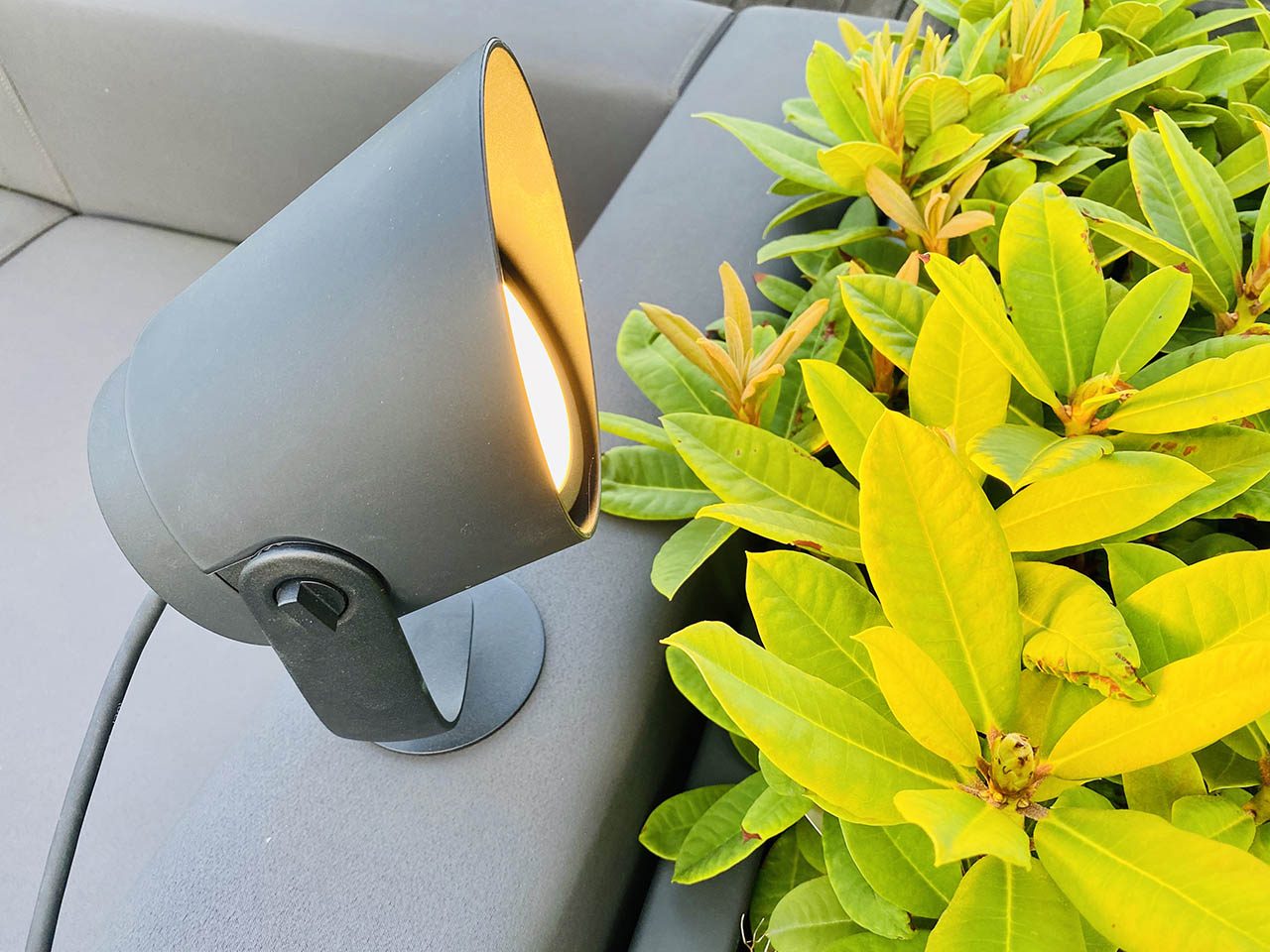
Because the Lily XL works on low voltage, you don’t need that ground cable. However, you need a transformer, which you have to buy separately. You can only connect a limited number of lamps to it. We used the 40 Watt Hue transformer. Because the Lily XL requires 15 watts, you can connect a maximum of two lamps to it. It is therefore a matter of puzzling which lamps you can best combine. The smaller Lily outdoor spots use 8 Watt, while the Lightstrip is at 19 Watt. Fortunately, there is now also a 100 Watt transformer for outdoor use, to which you can connect more lamps. That does result in quite a mess of cables, which are less easy to get rid of than a ground cable. So each system has its advantages and disadvantages.
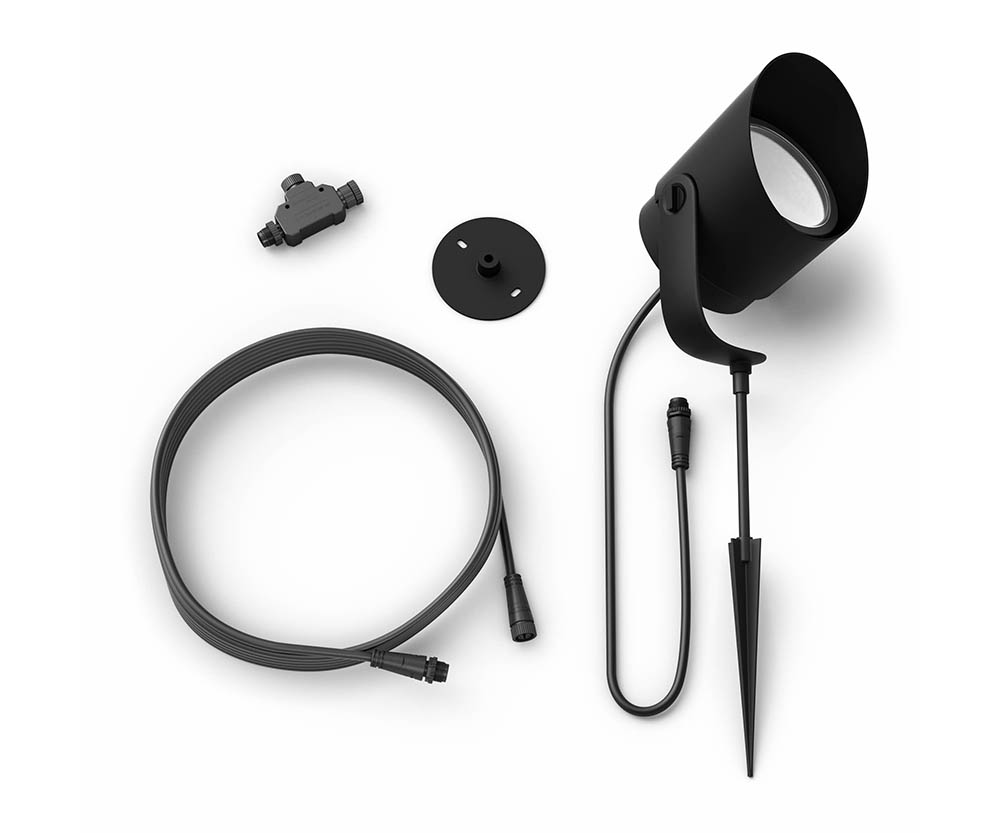
In the box you will find the lamp with lens hood and mounting material. For example, you can screw the lamp to a wooden decking or fence, or stick it into the ground with a kind of tent peg. The cable itself is long enough at 2.5m; you can also buy a longer cable. That will cost you between 24 euros (2.5 meters) and €35 (5 meters). You can connect a maximum of 35 meters of cable.
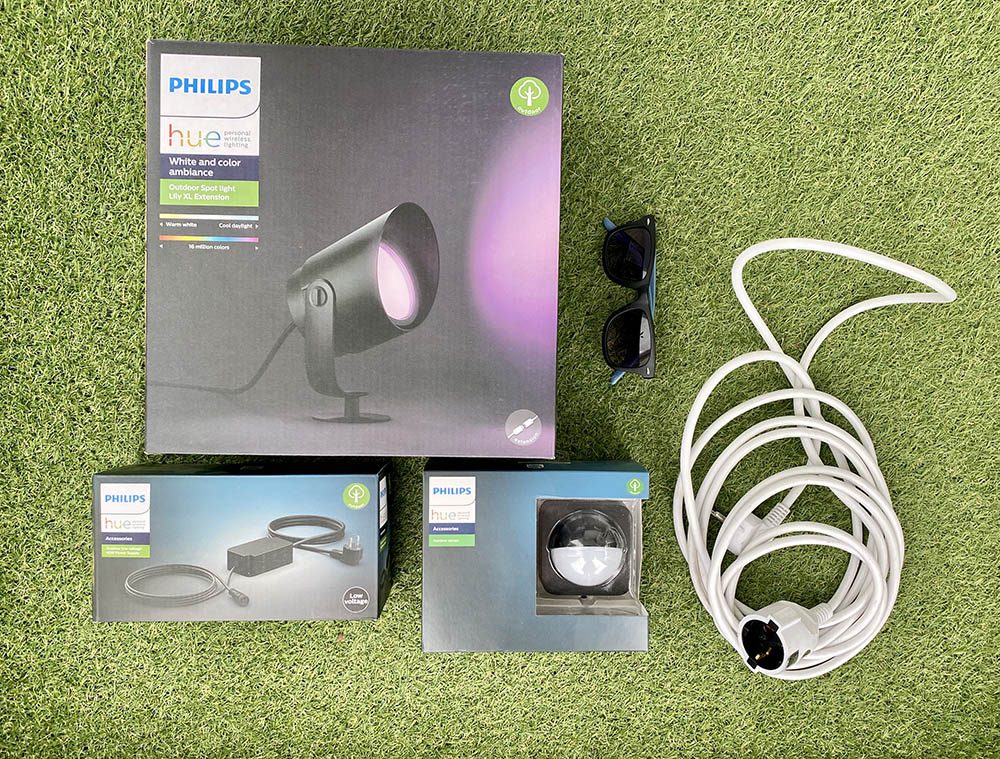
Design and appearance of the Lily XL
All Lily spots have a metal housing of black aluminum and a glass plate. With the XL you get a kind of sun visor for directed light. The product feels robust and the design looks neutral. There will be few people who find the lamp ugly, but it does not have a striking design. As far as we’re concerned, fine. The IP65 rating indicates that they are water resistant, so even if you regularly spray with the garden hose, this should not be a problem for the Lily XL, although there are known cases where condensation made the lamp unusable. The plastic hood actually offers little protection against moisture and is mainly intended to direct the light beam a little more.
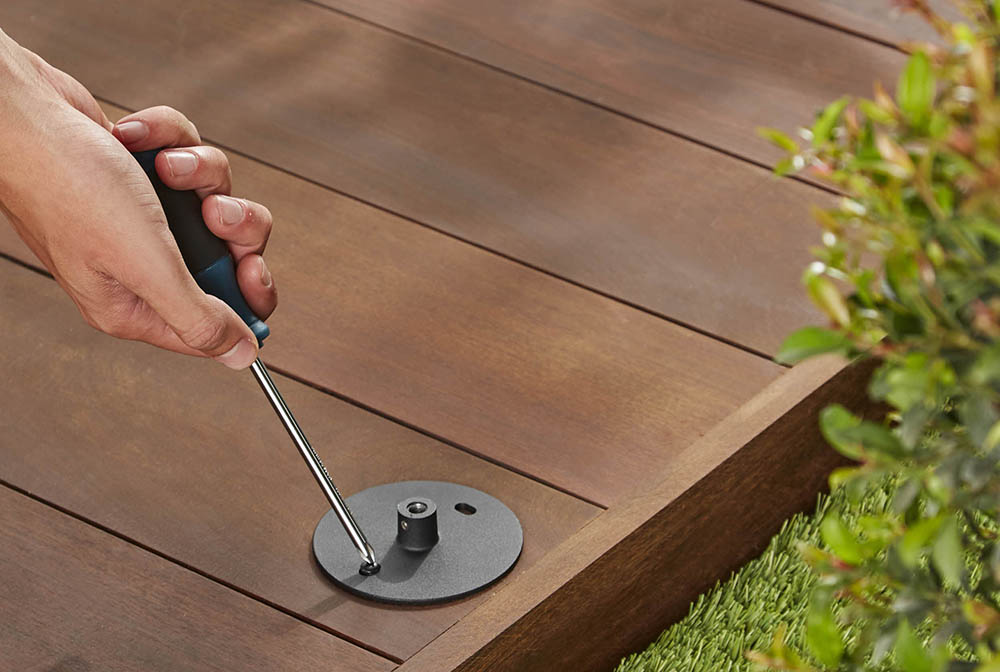
The Lily XL is intended to illuminate somewhat larger plants or trees. Beautiful plants get an extra accent, but unsightly spots also become much more visible as a result. So think carefully about where you install this spot. You could possibly start with a standard set of 3 Lily spots (approx. 300 euros) and expand this further with the Lily XL to illuminate a nice corner that deserves some extra attention. The XL version of 1050 lumens (comparable to a 75 Watt incandescent bulb) gives quite a bit more light than the regular Lily spots that are at 600 lumens each. The diameter of 11.2 centimeters is twice as large as that of the regular Lily.
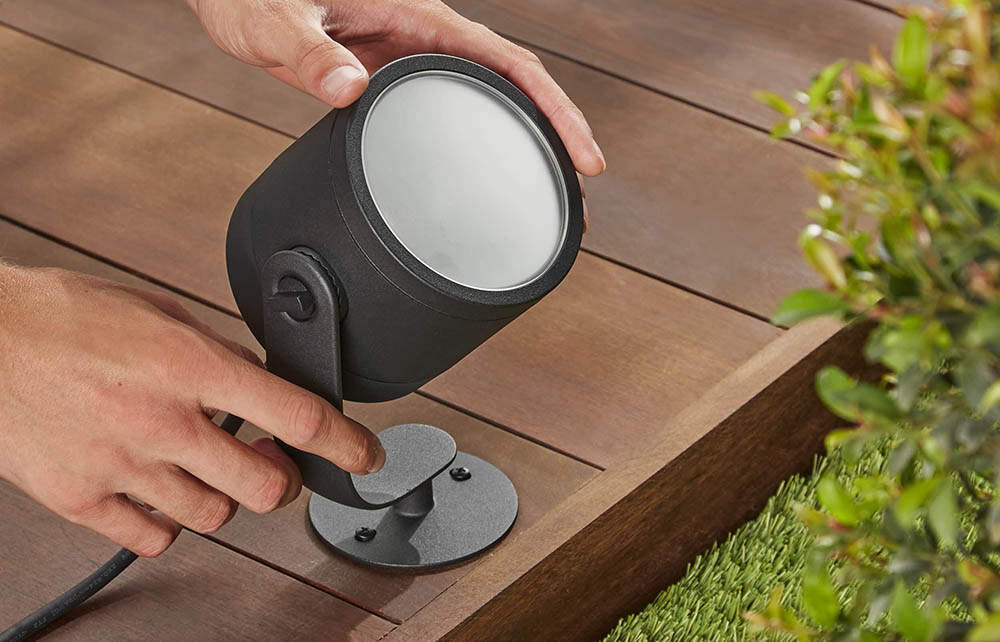
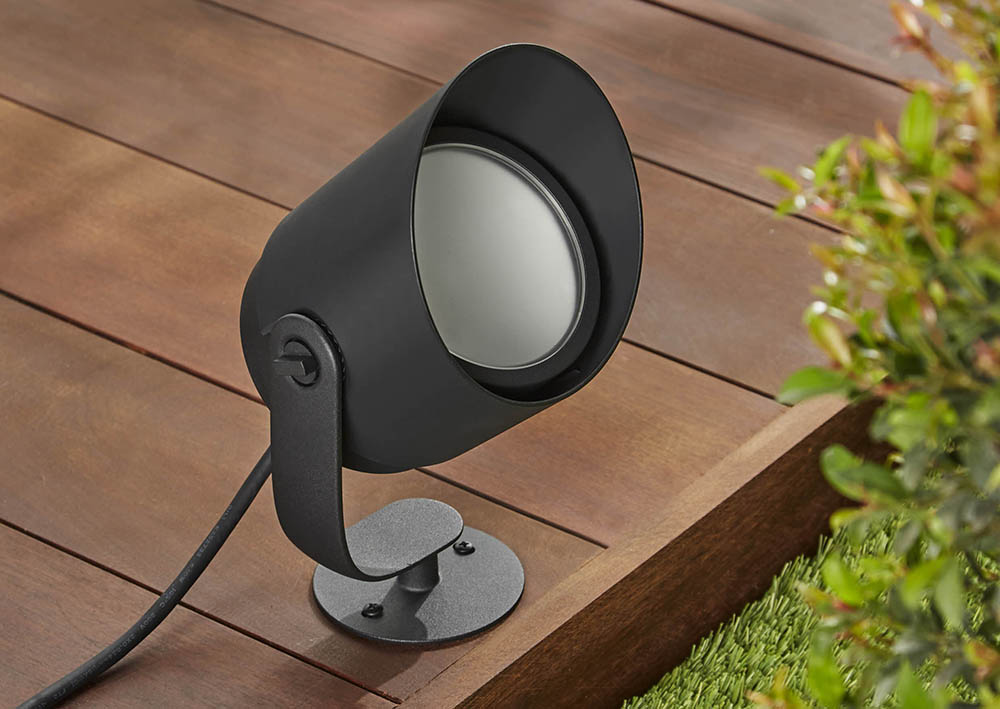
It is not a floodlight, so if you are looking for a lamp that can illuminate the entire entrance, then it is better to opt for a lamp that spreads the light a bit more. It is also good to know that the brightness of the lamp decreases when you start working with colors. The lamp is only at its brightest with shades of white.
The non-replaceable lamp has 25,000 burning hours. If you have the lamp on for 3 hours every night, it will last almost 25 years.
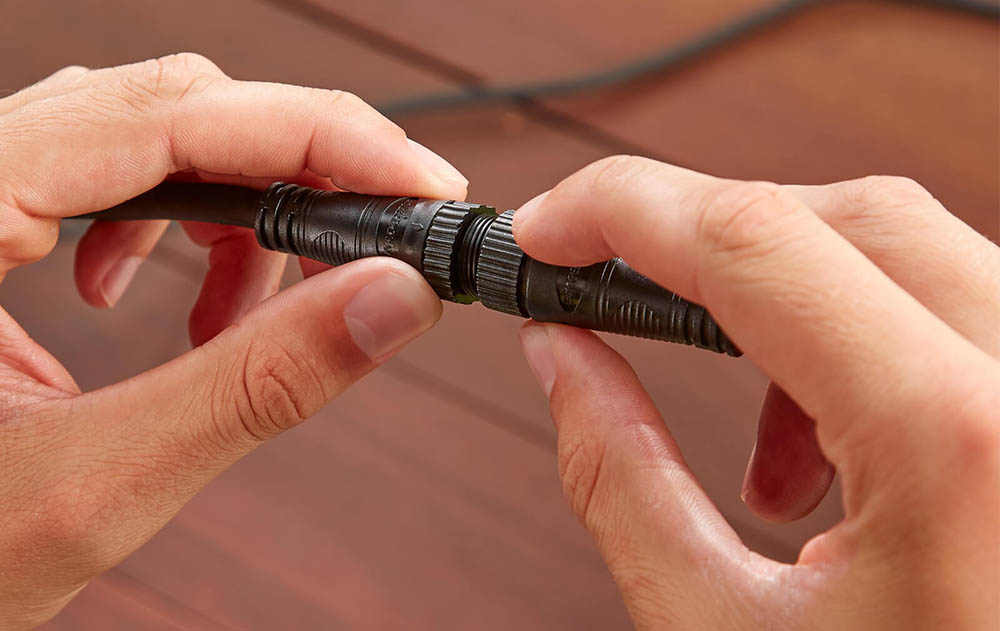
Lily XL in use
You can use the Philips Hue Lily XL as an extension of an existing system, thanks to the supplied connector. If you want to use the lamp separately, you need the transformer, which costs about 40 euros. You can operate it via the Hue app or, of course, with HomeKit and Siri. Anyone who already uses Hue lamps knows how to do it: connect it, have the lamp recognized by the app, configure it if necessary and you’re done. Don’t forget to add the lamp to the right room or zone.
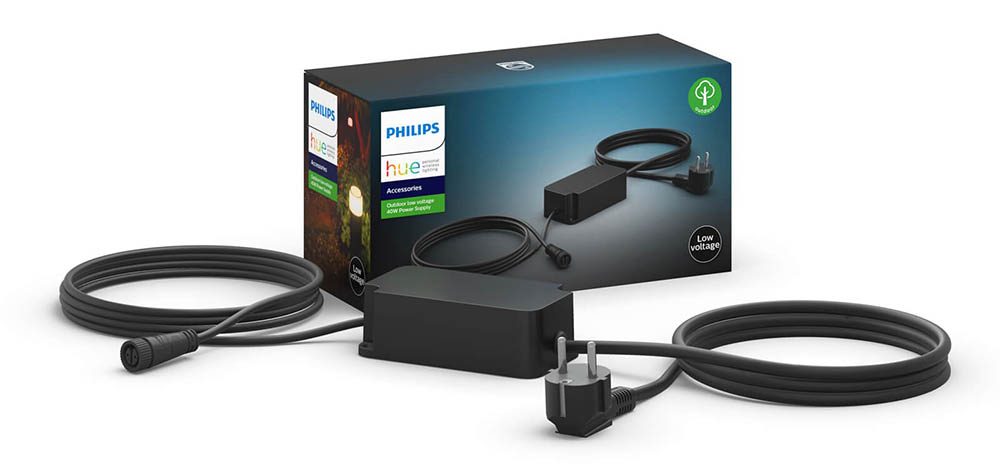
We have had very good experiences with Philips Hue lamps so far. They are a lot more stable and reliable than IKEA lamps (which you can also add to the Hue app). No other manufacturer has so much choice of indoor and outdoor lamps and fixtures and many updates are also appearing. You can set the colors and brightness of each spot separately, as you are used to with Hue. The Lily XL has 16 million colors and a color temperature of 2000 Kelvin (warm) to 6500 Kelvin (cool). With self-invented scenes such as ‘Sunset’ or ‘Garden party’ you can ensure that you quickly switch between color settings. You can also activate certain scenes based on sunrise and sunset.
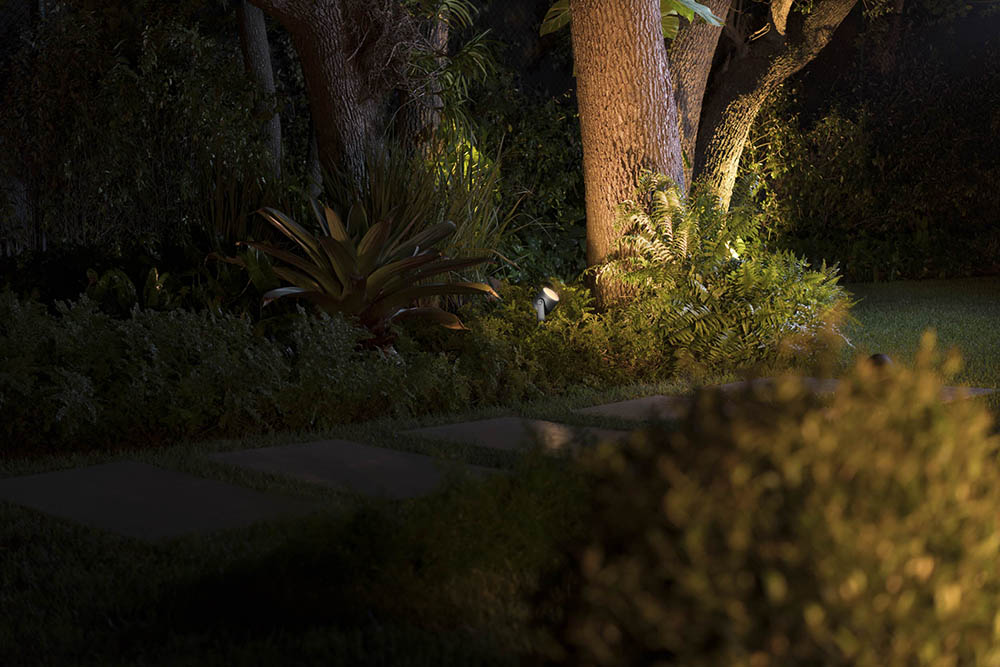
A situation with white light.
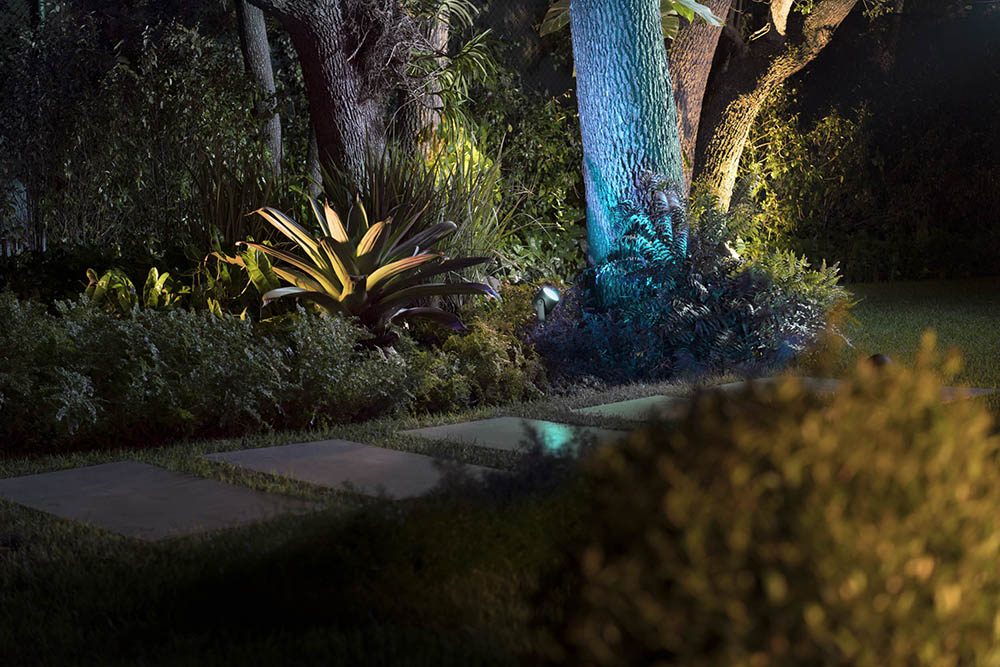
The same place with blue light.
The Lily XL is Zigbee based and requires a Hue Bridge to control remotely (via the Hue app). If you want to use with HomeKit, you always need the Hue Bridge. In addition, remote control via HomeKit requires a home hub, such as an Apple TV or HomePod.
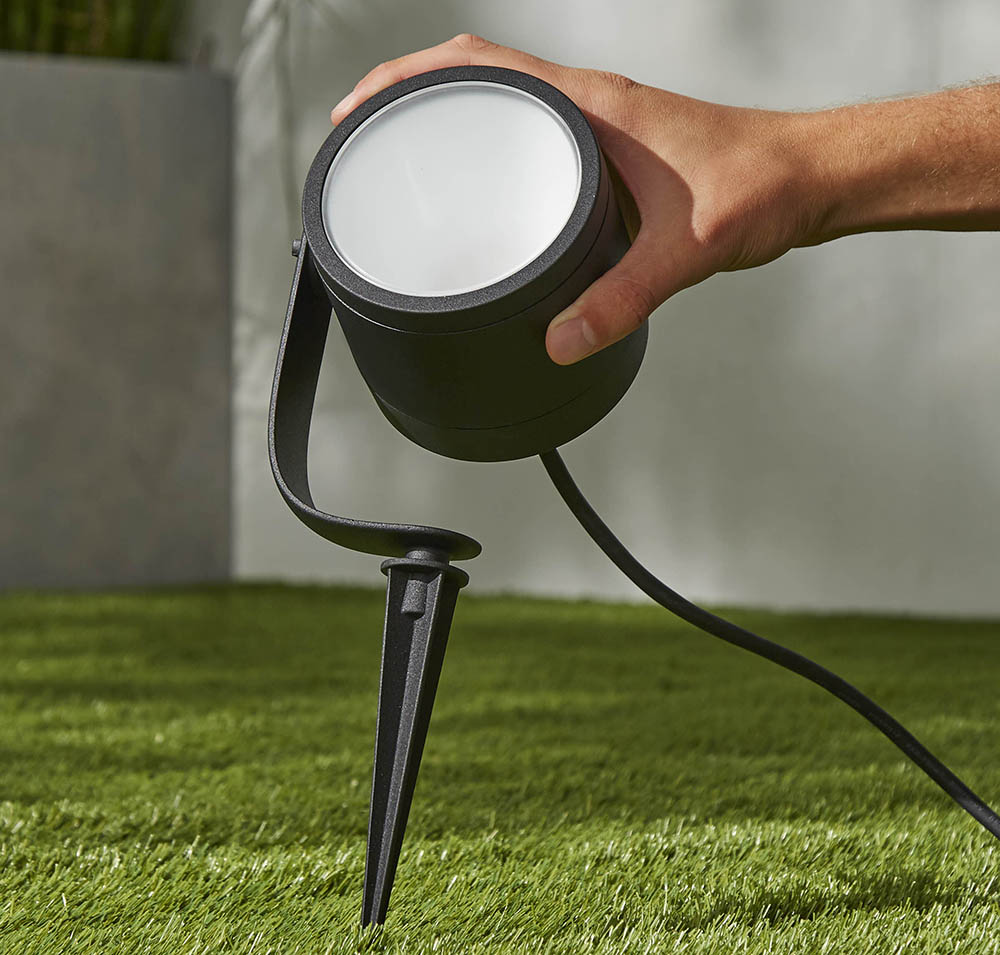
Outdoor sensor from Philips Hue
We combined this lamp with an Outdoor Sensor from Philips Hue, so that the Lily XL switches on automatically when someone comes close. With this lamp, however, a motion sensor is less logical. Usually you will leave such a spotlight on all evening. With pillars that you place along a garden path, such as the Philips Hue Calla, a motion sensor comes into its own.
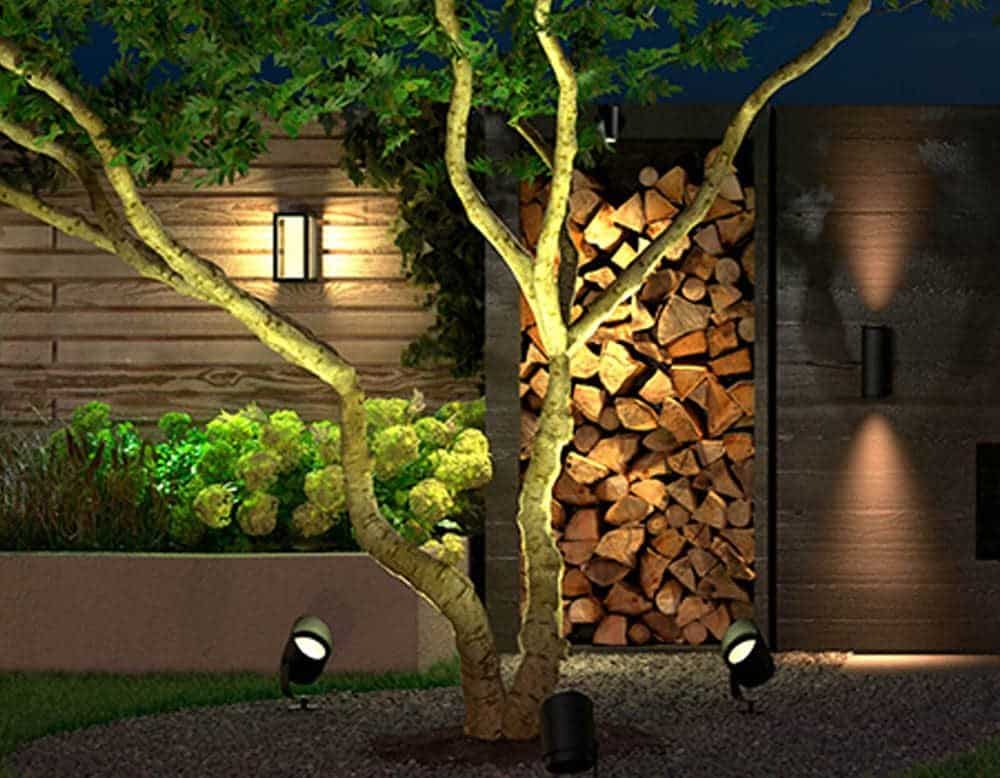
The Philips Hue outdoor sensor responds quickly, as we are used to from the indoor sensor. You have limited options in the Home app, but if you grab the Hue app, you have more setting options. Read in our review of the Philips Hue Motion Sensor what you can do with it.
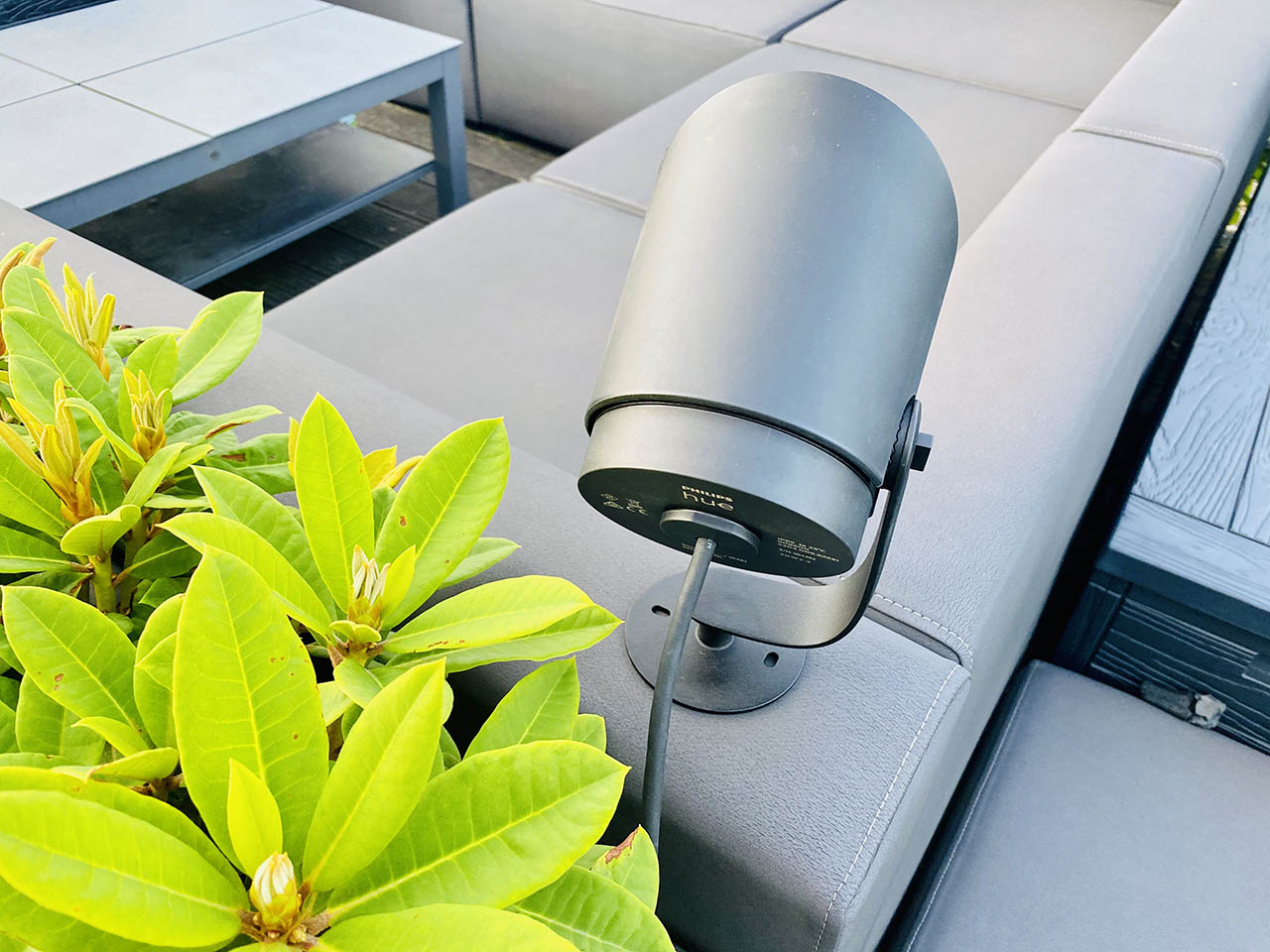
Conclusion Philips Hue Lily XL review
The Lily XL outdoor spot is intended to properly illuminate larger shrubs or trees. However, you need a transformer to use this low-voltage lamp, which means extra costs (and extra cables). The build quality is good, the installation is smooth and it worked effortlessly with your other (Hue) lamps and HomeKit. The price is on the high side, but luckily you don’t need that many and you get value for money because it is a good quality product that lasts a long time. You will illuminate most of the garden with cheaper outdoor lamps such as the standard Lily, while you only need the Lily XL for an extra light accent. With 1050 lumens, the Lily XL gives a decent amount of light.
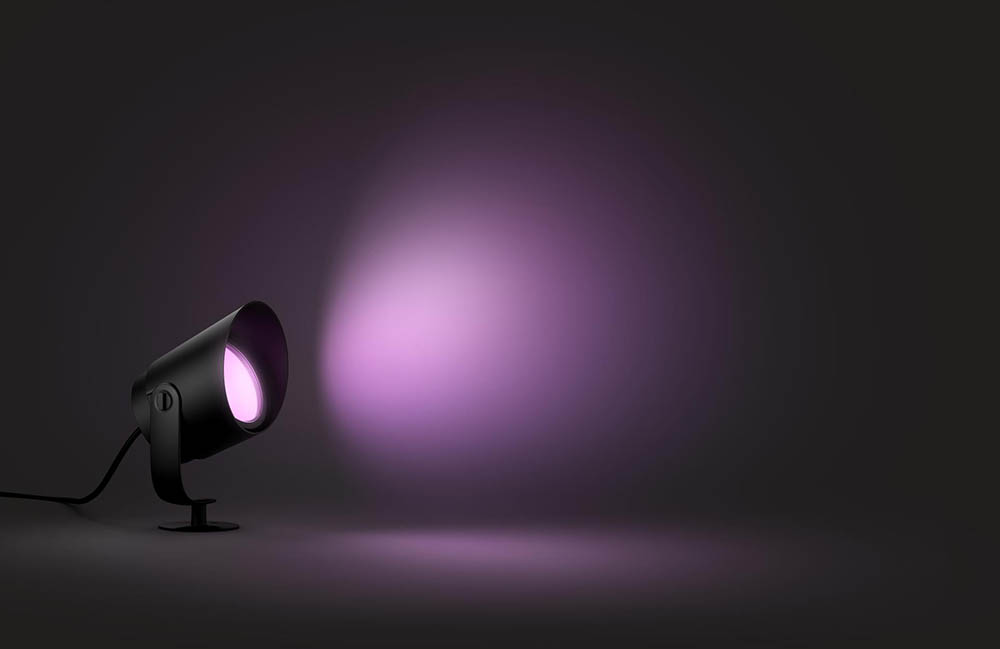
Buy Philips Hue Lily XL
You can buy this lamp at various stores that have smart lighting in their range, including MediaMarkt (temporarily approx. 100 euros) and Fonq. At Coolblue, almost all models are sold out, but you do get a good impression of what a bundle costs: one lamp for €125, two for €250, three for €380 and four for €500. There is therefore not a lot of bundle benefits to be scored – and it is also questionable whether you need several pieces of the XL version.
The power adapter that may be required for outdoor use costs around 40 euros in the 40-watt version and 70 euros in the 100-watt version. A 5 meter extension cable costs €35 and a 2.5 meter extension cable costs €24.













